How to Make a Lemonade Stand

"I always enjoy building projects, but the chance to do it with someone else (especially a couple of excited kids) is always a special treat."
Materials
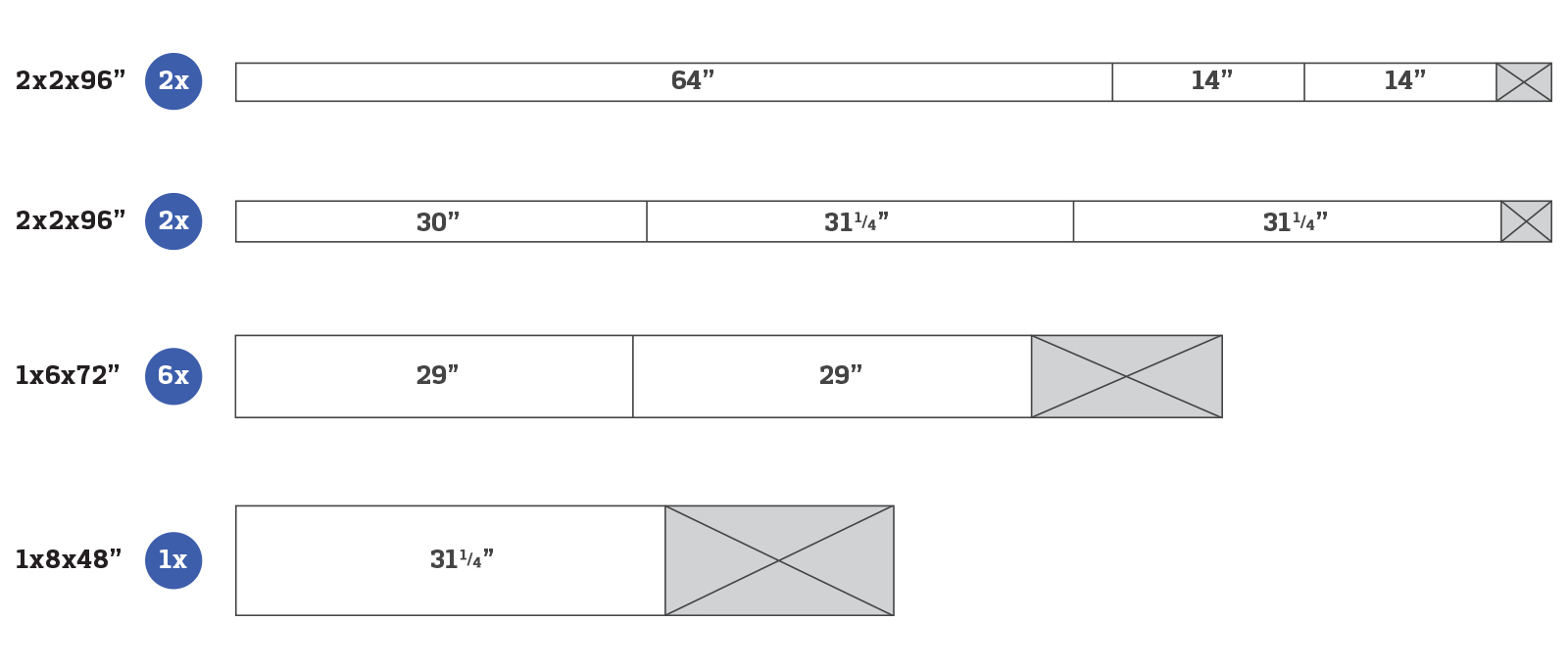 Almost every child goes through a lemonade stand phase. This phase usually accompanies the desire for some life-changing toy, or the sudden need for riches, or the impulse to run their own business. Whatever the reason, a lemonade stand is an opportunity for any kid to learn the value of work and pay and get a chance to experience some independence.
Almost every child goes through a lemonade stand phase. This phase usually accompanies the desire for some life-changing toy, or the sudden need for riches, or the impulse to run their own business. Whatever the reason, a lemonade stand is an opportunity for any kid to learn the value of work and pay and get a chance to experience some independence.
We’d already been talking about building a lemonade stand for Dunn DIY for a while when I learned that the kids of some friends of mine had been wanting to make one all summer long. I always enjoy building projects, but the chance to do it with someone else (especially a couple of excited kids) is a special treat.
The stand my dad and I came up with was designed to be beautiful but simple enough that kid participation—depending on age or skill level—would be possible. For the sake of simplicity, we went with a natural look. Because of this, we chose to use green cedar, which holds up well under the Pacific Northwest weather. If a coat of paint is desired you’ll want to pick a kiln-dried wood, otherwise the paint won't dry well.
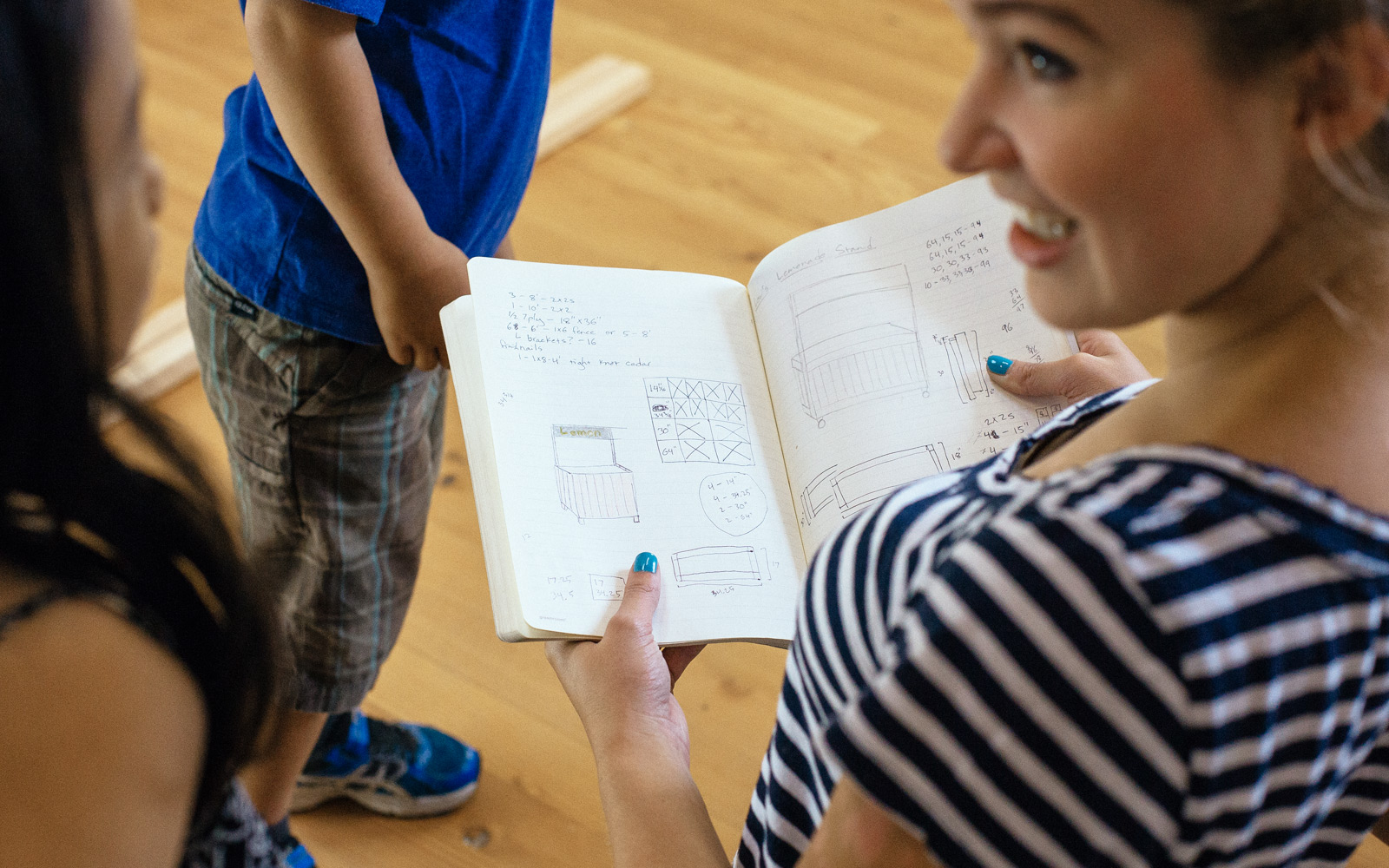
Step 1: Pick out and Cut your Materials
The first step is to pick up your materials from Dunn Lumber. The plywood will need to be cut down to a rectangle of 34¼” x 17”. This is a cut you can ask them to make for you, or you can use a table saw or circular saw at home.
Because of the equipment used to make the cuts they will be + or – 1/8”. This won’t be a problem, but when you get home measure the plywood exactly and alter your other cuts accordingly. I think ours ended up being 34 3/8” x 17 1/16”. Adding or subtracting those little differences will help everything fit together really nicely at the end.
With a chop saw, cut the four 2" x 2"s as follows:
Board one and two: 64”, 14”, 14”
Board three and four: 30”, 31¼”, 31¼”
This will leave you with two back legs that will extend into sign (64”), four short side pieces (14”), two front legs (30”), and four front and back pieces (31¼”).
Cut 1" x 8" to 31¼” for the overhead sign.
Cut the cedar fencing into twelve 29” pieces. This length will give you ½” of overlap at the top and two inches for the legs at the bottom. Having only four points of contact instead of all the fencing resting on the ground will help make the stand stable.
Using a piece of 2" x 2", trace the outline on the back corners of the plywood tabletop. Cut out the notches with a jigsaw.
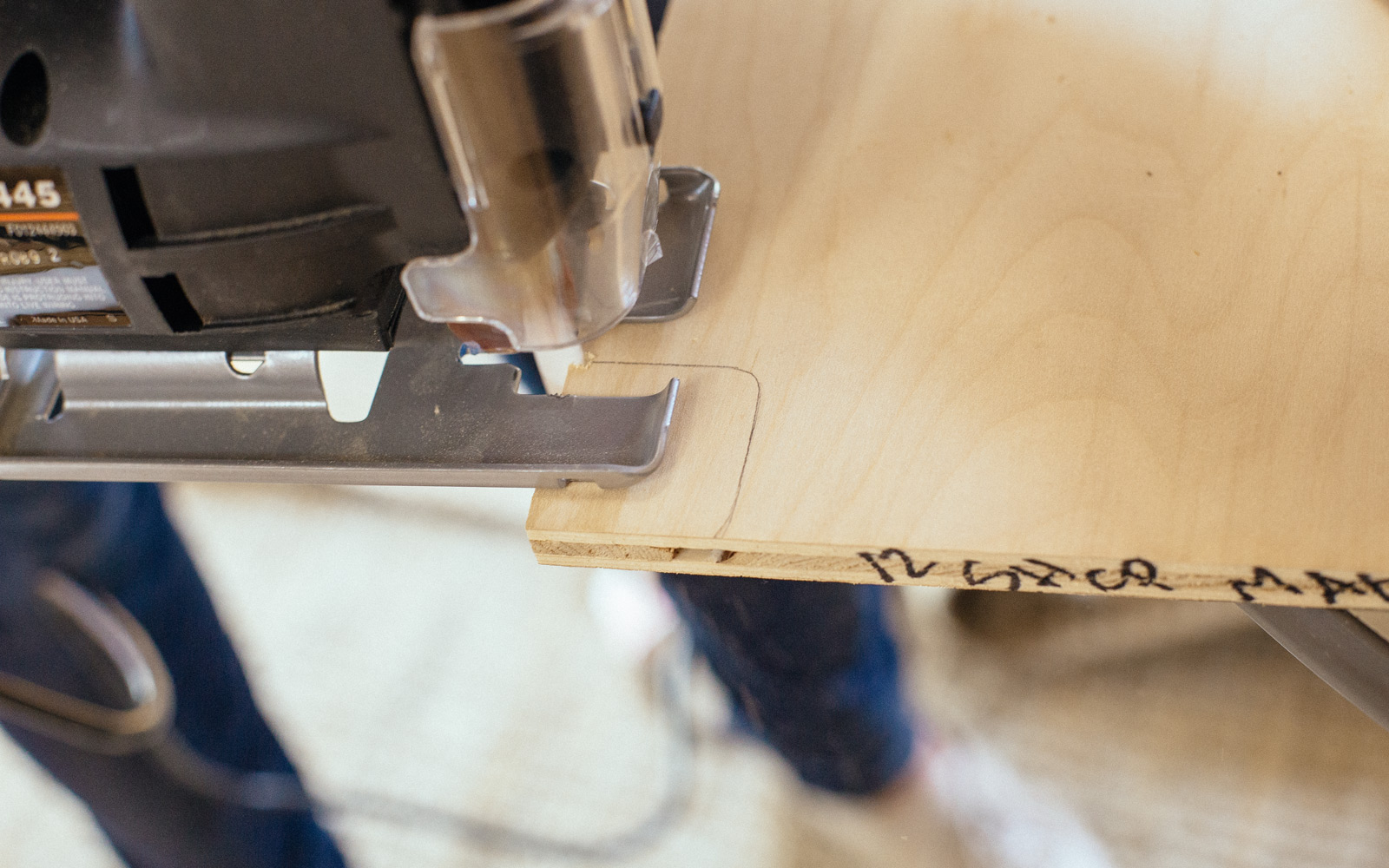
Step 2: Paint your Sign
Pre-assembly is a good time to paint the sign. This will give it plenty of time to for the paint to dry while you continue to work. Lay out the plastic drop cloth outside and shake up your can of chalkboard paint. Following the directions, cover the smooth surface of the 1" x 8" with an even layer of paint. You can tape off the edges of the board if you wish, but we didn’t feel the need. Leave the chalkboard paint to fully dry.
Step 3: Assemble your Lemonade Stand
To assemble, we'll start with the frame. All the lengthwise connections will be made with two 2½” screws. Front and back connections will use metal corner braces. There will be a lot of cross traffic with all the various screws and nails, so be aware of where you place them and how you’ll avoid running into them later on. Attach the leg (30”) to outside end of the top, front piece (31.25”) with two 2 ½” screws. Repeat with the second leg on the opposite side of the front piece.

Step 4
To this structure, add the top, side pieces (14”). Attach these to the legs at a 90° angle to the front piece with metal corner braces. Measure two inches up from the bottom of the legs and attach the bottom, front piece (31.25”) with two 2½” screws in either end. In the same way as at the top, attach the bottom side pieces (14”) on the same level as the bottom front piece with metal corner braces.
Lay the frame on its back. Using the floor as your guide, screw in corner braces to the bottom of the top, side pieces, and to the top of the bottom side pieces. This should leave you with four corner braces ready to connect the frame with the back legs.
Measure and mark 2" and 30" from the bottom of the long back legs (64”). Line these marks up with the top and bottom side pieces of the frame and screw the corner braces in place. With the frame still on its back, screw in back top and bottom pieces (31.25”) with two screws in each end.
The frame is now complete! Time to add your fence skirt.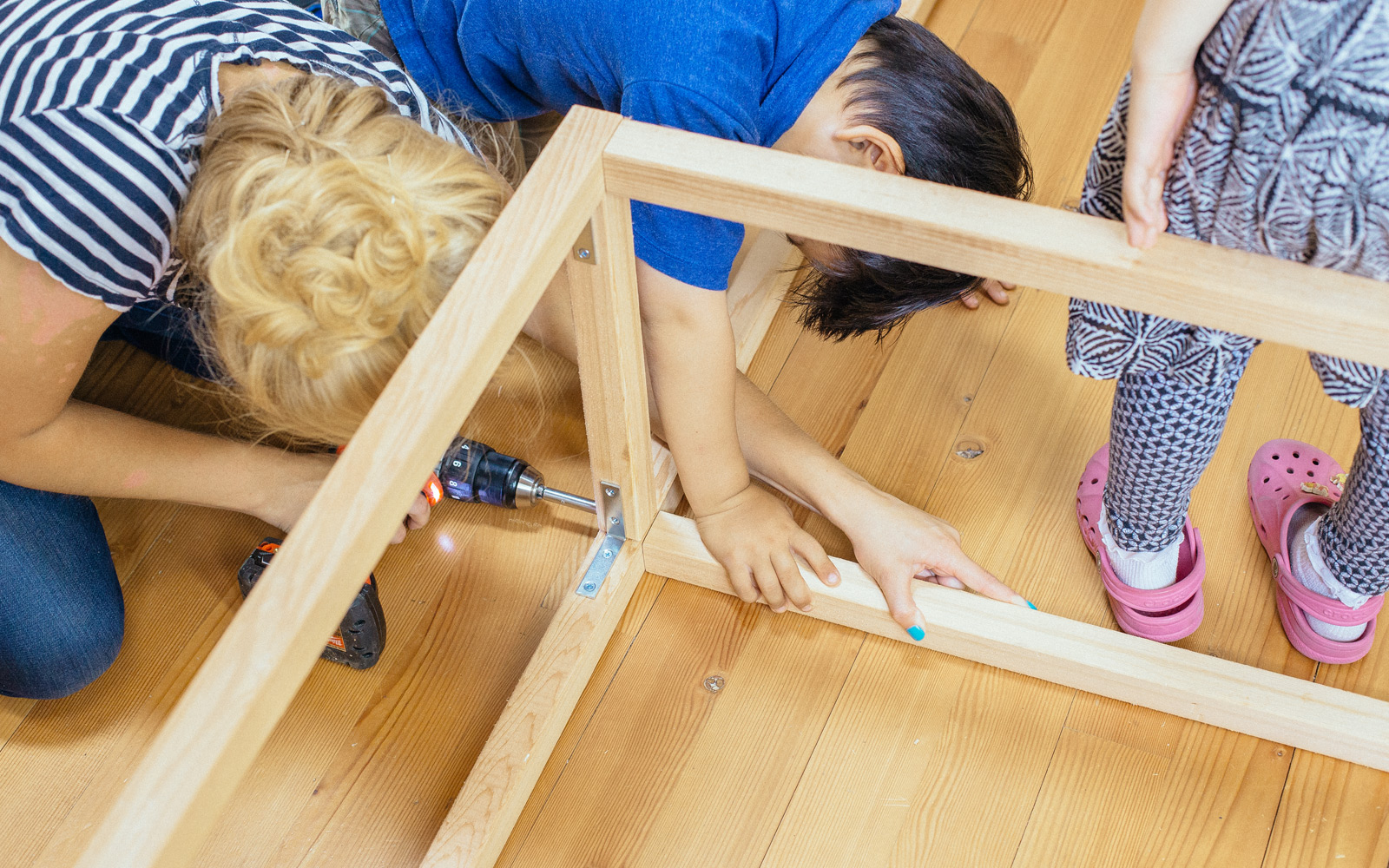
Step 5
You’ll be attaching the fence boards with 1¾” galvanized nails or, if you prefer, with 1½” finish-head screws. Hammering is a great way to get kids involved, but if participation isn’t a goal then screwing them in is probably easier (unless, of course, you have a nail gun).
Here’s the fun part: After building the whole frame, we realized there was a mix-up in the measurements.
It was supposed to be 34¼” long to accommodate for the fencing and to avoid ripping lumber. I accidentally cut the inside pieces to 34¼” instead of 31¼”. This added an extra three inches, which totally threw off the spacing of the fencing boards.
Since we had two impatient, eager children working with us, we couldn’t just sack the work we’d done and start over. So, we worked around it! That's what a DIY project is all about. You can make it yours. The end product still worked well and had a fun look to it. We’ll walk you through the original design and the altered design and you can choose which one you’d like to make.
For the original design, line up your fence boards across the front of the stand approximately ¼” apart. Due to slight variations in wood widths, we recommend doing a dry fit to make sure it fits well before beginning to secure things. Now, measure 1" from the top of your fence boards and line up with the top of the frame. This will create a ½” skirt around the plywood tabletop. Screw or nail down the fence boards. Once you’ve attached one board, there’s no need to measure the rest, you can just line each one up with the first. Repeat the process on both sides of the stand.

Step 6
For the alternative design we ended up with three extra inches across the front, so we added “wing” pieces that overhung the edges by an inch or so. This was enough to cover up our mistake, and added some depth and visual interest. Without changing the length of the stand it should be easy to add your own wings if you like that look.
With the stand once more on its back, lay out the sign between the back supports. Attach with two screws in either end. Grab some chalk and decorate your sign!
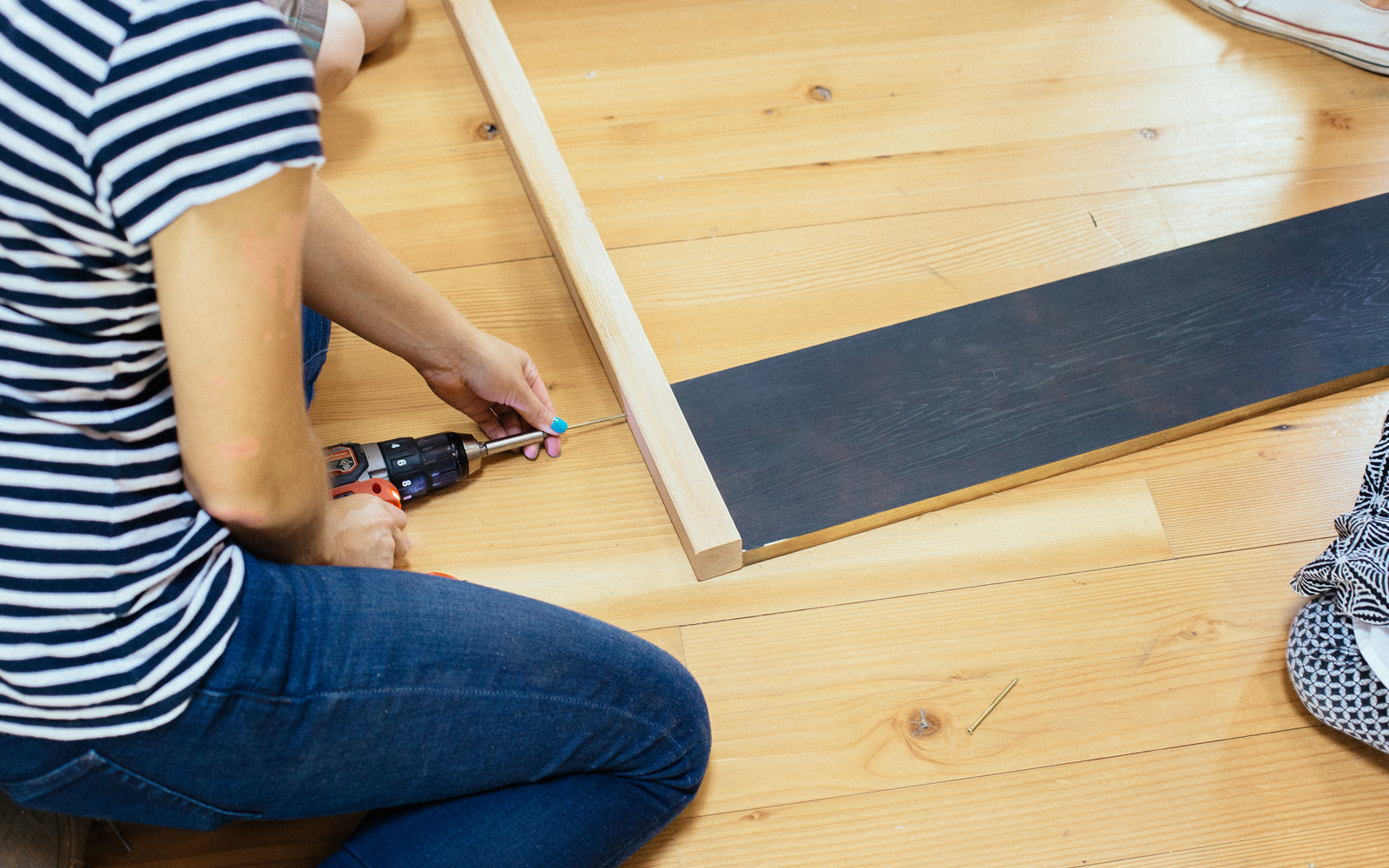
Step 7
The last step is to fit the plywood top inside the fencing. (You may notice that ours wasn’t quite big enough. This again had to do with the measuring mix up. If you feel the need, you can secure the plywood to the frame with some screws or just leave it freestanding.)

Step 8
Time for the lemonade! We made ours fresh-squeezed by mixing together lemon juice, water, and simple syrup to taste. The simple syrup is just equal parts sugar and water, boiled until the sugar dissolves. This ensures that you won’t end up with a pile of sugar at the bottom of your lemonade.

Step 8
Now get out there on a hot summer day, and sell your lemonade!







